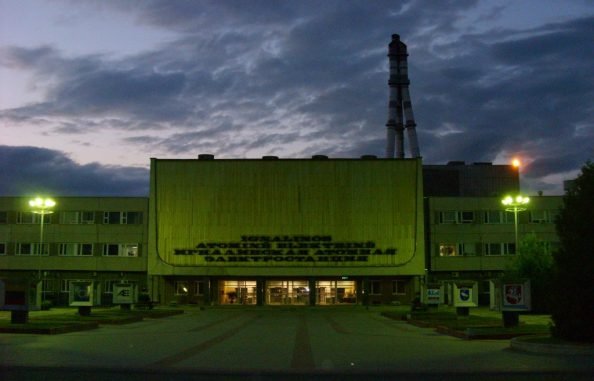
The urban structure of Visaginas was planned from scratch in the context of the short-term economic abundance created by the adjacent Ignalina nuclear power plant (1975-2009). For this reason, Visaginas is considered both one of the best examples of a centrally planned, mono-functional urban units in the Baltics and a highly successful settlement in terms of architectural decisions, quality of living, and human capital.
Because of the rapid mode of Soviet urbanization, the Visaginas population historically consisted of nuclear scientists, engineers, construction workers, and their family members who came from the entire Soviet Union. But it was mainly the nuclear power plant and collectively constructed housing blocks that facilitated local belonging and enabled an identification with the place.
In the aftermath of the 1986 Chernobyl disaster and as a condition of Lithuania’s accession to the EU, the Ignalina nuclear power plant was gradually shut down, beginning in the 1990s. As a result, the town stopped growing. Rising unemployment, dwellers’ anxieties about the future, and a population decline of more than 20 percent ensued. In addition, inhabitants formerly perceived as part of the Soviet elite are now seen as a problematic Russian-speaking population in the context of an independent Lithuanian nation-state.
An international workshop on post-industrial cities in the Baltics will take place in Visaginas February 24–26 and discuss these questions. Scholars from Berlin, Erkner, London, Riga, Stockholm, Tallinn, and Vilnius will describe their research on “cultures of shrinking” in post-industrial towns, with particular focus on the case of Visaginas, a former Soviet “nuclear town” in Lithuania. Visaginas serves as a specific example of the wider phenomenon of shrinking urban settlements in the Baltic states.
The workshop gathers academics who have worked on Visaginas and other shrinking settlements from such fields as sociology, urbanism, anthropology, and cultural history in order to understand more fully the situation of the town today and to try to open paths for imagining scenarios for its future. In order to do so, the workshop examines Visaginas through a discussion of the roles played by culture in a context of shrinkage: as strategies for coping and survival, modes of community identification and everyday praxis, and potentially as a means for producing visions for the future and opportunities for economic growth.
The organizers on behalf of the EHU Laboratory of Critical Urbanism are interested in exploring questions of how the heritage of Soviet modernism, nuclear technology, and mono-functional urban planning in Visaginas relate to the town’s position in a new socio-economic paradigm; how ethnic cultures relate to the new narratives of the Lithuanian nation-state; what potential there is for cultural initiatives either to enable the survival of built and community infrastructures or to facilitate new modes of economic growth; how the memory of having built the town influences inhabitants’ sense of identification with the place; or how the habitus of nuclear scientists relates to the contemporary town and what paths might this present for the future.
The workshop is organized by EHU’s Laboratory for Critical Urbanism and its partners, the Estonian Academy of Arts, the Herder-Institute Marburg, the Lithuanian Social Research Centre, Archfondas.lt, and the EHU Center for German Studies. It is supported by the Deutsch-Baltisches Hochschulkontor Riga and the German Academic Exchange Service (DAAD). The scope of future research inquiries will also be discussed at the workshop, preparing for the International EHU Summer School on “Sources of Urbanity in Post-Industrial Cities”, which will take place September 20–October 3 in Vilnius, Lithuania. This project of the Baltic-German University Liaison Office is supported by the German Academic Exchange Service (DAAD) with funds from the Foreign Office of the Federal Republic of Germany.

Be the first to comment